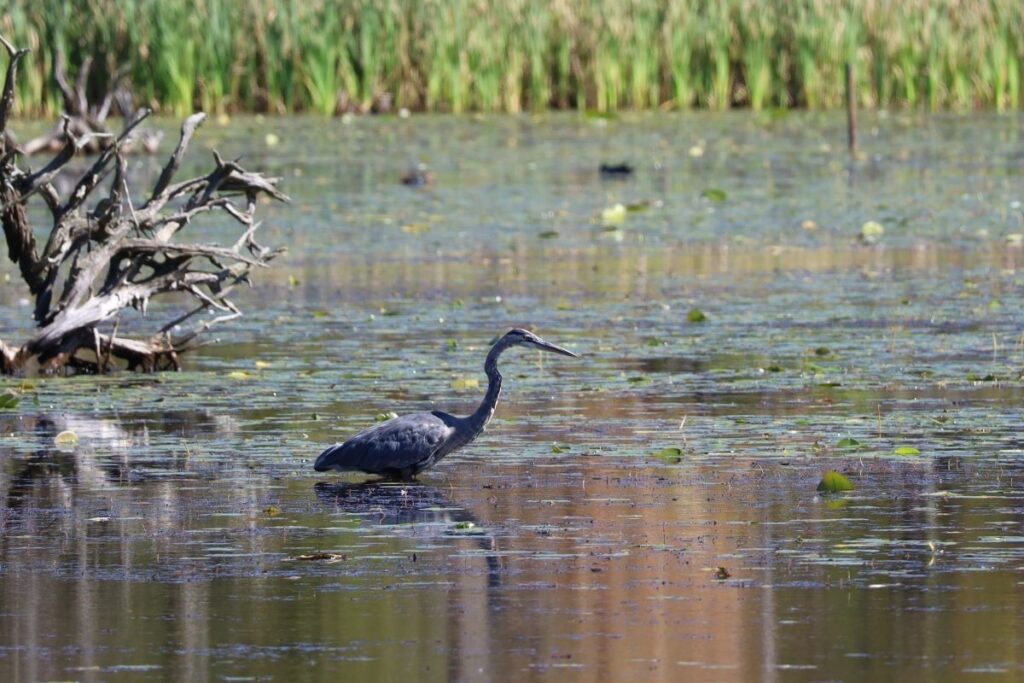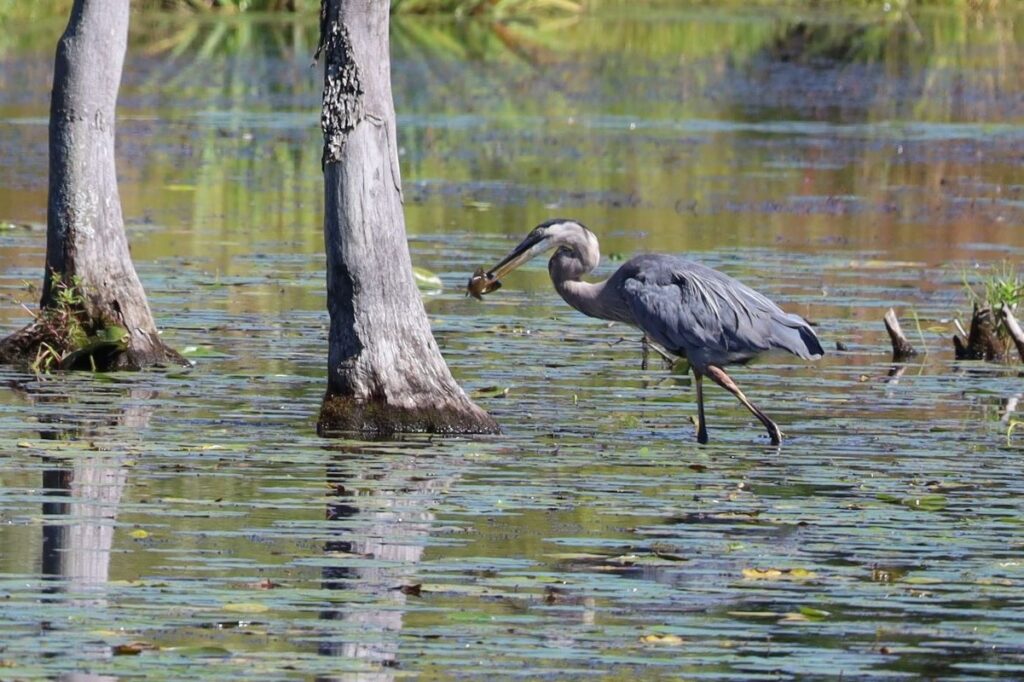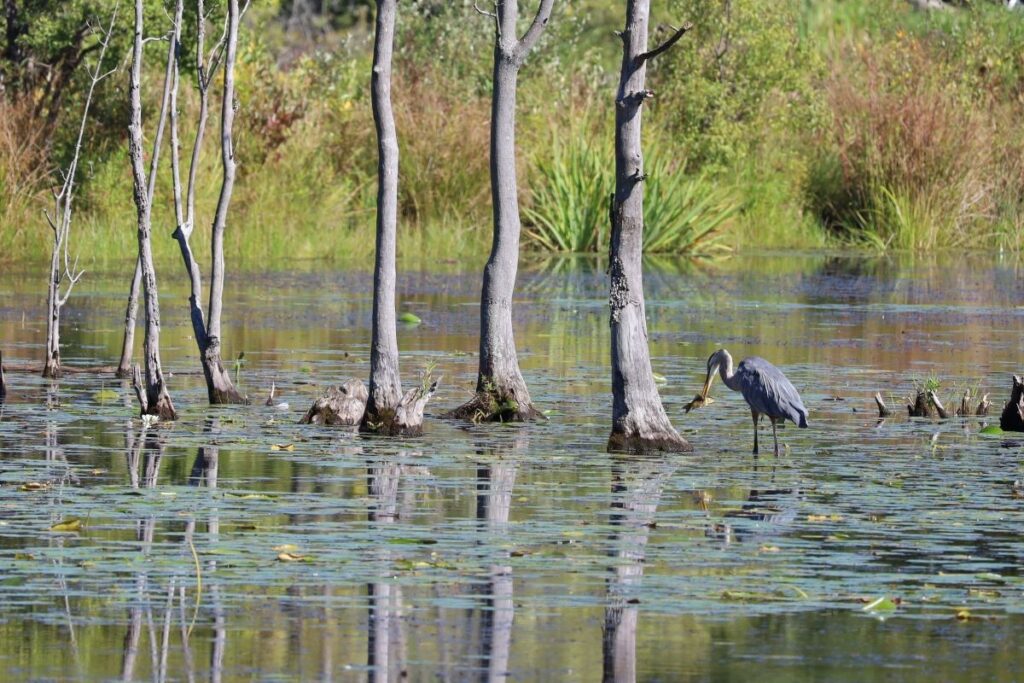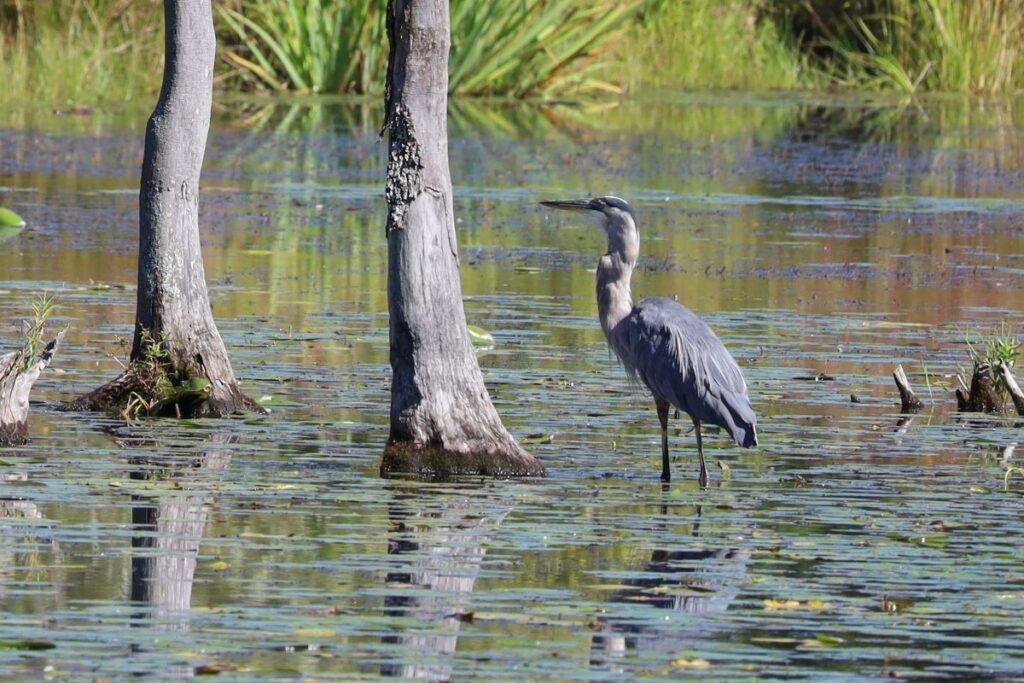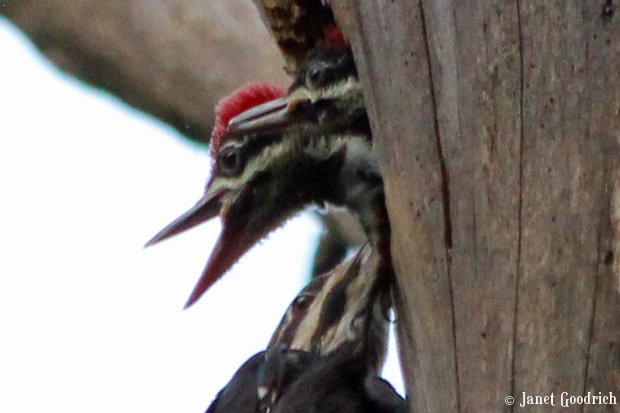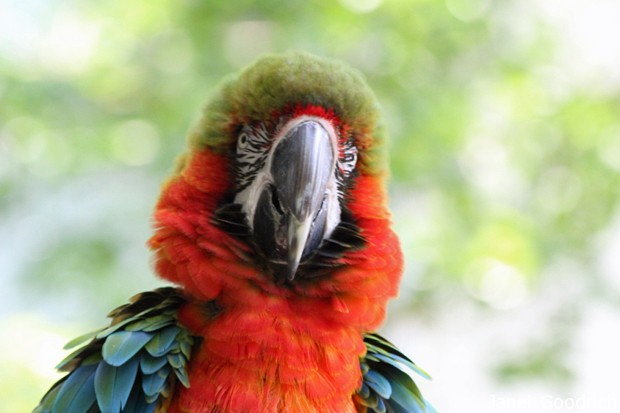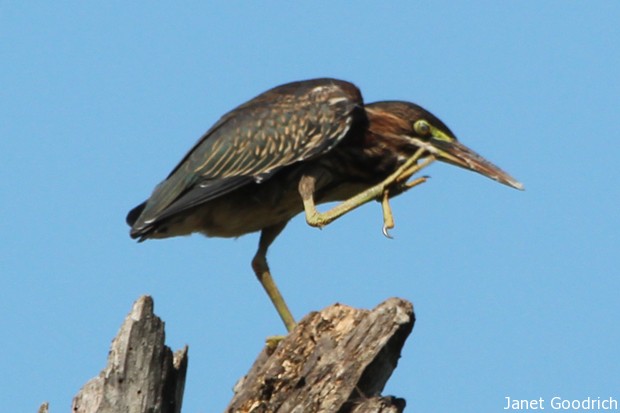Field Notes: Great Blue Heron
There were lots of sights at Sapsucker Woods this week when my daughter and I went for our first walk there in two years: interesting plants, frogs, fungi, berries, and damselflies performing strange feats. But the great blue heron stalking its prey in the pond stole the show.
The Handbook of Nature Study doesn’t include a section on these birds, but Peter Rabbit, the narrator of The Burgess Bird Book, accurately notes that “Plunger [the osprey] hunts for his fish while Longlegs waits for his fish to come to him.” (Links to books are Amazon Associate links.) Peter gives a wonderfully exact description of Longlegs’s appearance, then notes his behavior:
Longlegs waded into the water a few steps, folded his neck back on his shoulders until his long bill seemed to rest on his breast, and then remained as motionless as if there were no life in him. . . By and by [Peter] began to wonder if Longlegs had gone to sleep. His own patience was reaching an end and he was just about to go on in search of Rattles the Kingfisher when like a flash the dagger-like bill of Longlegs shot out and down into the water. When he withdrew it Peter saw that Longlegs had caught a little fish which he at once proceeded to swallow head-first. Peter almost laughed right out as he watched the funny efforts of Longlegs to gulp that fish down his long throat.
We had a front row seat to this drama at Sapsucker Pond. The difference is that the fish was large, and it didn’t inspire laughter.
After a long wait, the heron caught a good-sized fish.
It immediately carried the fish to shallow water, seemingly aware that this would ensure an easier recovery if the fish flopped loose, walking slowly and deliberately so as not to drop its prey.
At the end, it reoriented the fish (now wriggling desperately) somehow, then tipped its head up and swallowed it.
It concluded the process with a few gulps of water, dipping down for a mouthful and then pointing its beak to the sky.
It’s a handsome, gawky, almost prehistoric looking bird, and I can’t begrudge it its need to eat, especially factoring in the great patience and deliberation it demonstrated. But it was hard to watch. It reminded me of my love-hate relationship with nature. I love the beauty, variety, endlessly interesting adaptations of our subjects. But I hate the cold-blooded predation.
Is there a value in seeing this?
What I think of is that it has the value of knowing about something real in animal existence, and human existence. Like the heron, we eat other living creatures. Unlike the heron, we can register the inherent violence, and this carries with it a greater responsibility to ensure a good quality of life for any living creatures we consume, and to minimize the cruelty of slaughter. For some, it means choosing a vegetarian or vegan diet.
In any case, the heron’s behavior meant more than a meal for the bird. It offered some food for thought to its human observers through an essential glimpse the natural world in operation.

